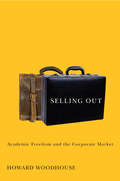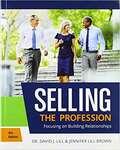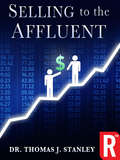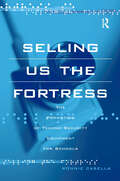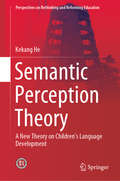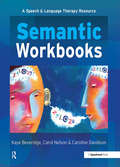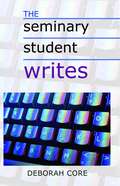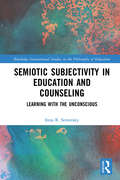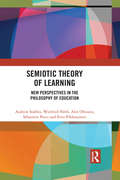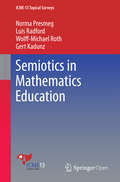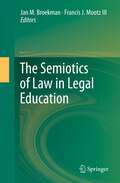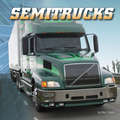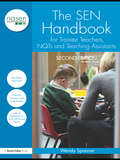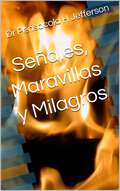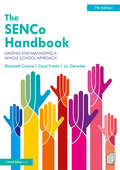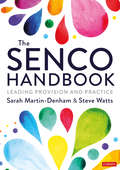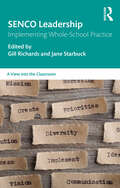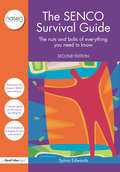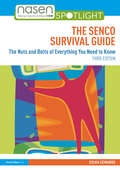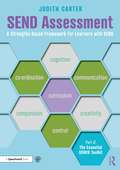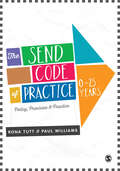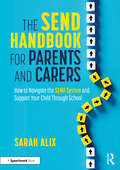- Table View
- List View
Selling Out
by Howard WoodhouseSelling Out demonstrates that the logics of value of the market and of universities are not only different but opposed to one another. By introducing the reader to a variety of cases, some well known and others not, Woodhouse explains how academic freedom and university autonomy are being subordinated to corporate demands and how faculty have attempted to resist this subjugation. He argues that the mechanistic discourse of corporate culture has replaced the language of education - subject-based disciplines and the professors who teach them have become "resource units," students have become "educational consumers," and curricula have become "program packages." Graduates are now "products" and "competing in the global economy" has replaced the search for truth.
Selling Out: Academic Freedom and the Corporate Market
by Howard WoodhouseSelling Out demonstrates that the logics of value of the market and of universities are not only different but opposed to one another. By introducing the reader to a variety of cases, some well known and others not, Woodhouse explains how academic freedom and university autonomy are being subordinated to corporate demands and how faculty have attempted to resist this subjugation. He argues that the mechanistic discourse of corporate culture has replaced the language of education - subject-based disciplines and the professors who teach them have become "resource units," students have become "educational consumers," and curricula have become "program packages." Graduates are now "products" and "competing in the global economy" has replaced the search for truth.
Selling the Profession: Focus on Building Relationships
by David Lill Jennifer Lill BrownSelling: The Profession is the roadmap to a rewarding sales career! Today, more than ever, it is all about relationship building in a digital world. In the 8th edition of this field-tested guide to selling, you will learn to: <p><p> • Appreciate that you are selling every day, regardless of your career. <p> • Use social media to connect with potential customers. <p> • Make good first impressions and build rapport. <p> • Recognize social styles and nonverbal signals. <p> • Effectively manage your time. <p> • Uncover needs by asking questions and listening. <p><p> The authors have taken a refreshingly practical and modern approach to professional selling. The 8th edition is divided into two parts: <p><p> • Part 1 explores "Selling Success Fundamentals" by examining the foundational strategy pieces needed for building a long-lasting career. This includes how to manage your time, read nonverbal cues, communicate with others within and outside your company, and recognize what drives people to buy. <p><p> • Part 2 is all about the "Relationship Selling Cycle." The eight-step process will walk you through every interaction with potential customers--from prospecting and pre-approach to the close and extend to the actions needed after the close.
Selling to the Affluent: The Professional's Guide To Closing The Sales That Count
by Dr. Thomas J. StanleyFrom the New York Times–bestselling coauthor of The Millionaire Next Door: &“No one better illuminates the who, where, and how of the affluent market&” (J. Arthur Urciuoli, former chairman at Merrill Lynch). In the bestselling classic The Millionaire Next Door, Dr. Thomas J. Stanley showed his readers where to look for the wealthy. In Selling to the Affluent, he shows us how to persuade them. This book provides an insightful roadmap of the motivations and purchasing patterns of the affluent—and delivers a strategy for salespeople to leverage that information to the best advantage. This book outlines all phases of the sales process, from approaching wealthy prospects to pinpointing their wants and needs—frequently different from those of less affluent markets—and selling both tangible and intangible products. It profiles several key demographics within the wealthy subset—including business owners, men and women, and the retired. It&’s the most detailed and inclusive manual on the market for selling to the wealthy. &“Dr. Stanley&’s strategies consider the real needs of the high income professionals—needs that go beyond any product or service. These needs are psychological and revolve around the recognition of the individual&’s extraordinary level of achievements. He provides some terrific insights as to how to solicit and maintain business by unconventional, but highly effective means.&” —Carolyn J. Cole, chairman and founder of The Cole Group and The institute of Economics and Finance &“Selling to the Affluent is well written, relevant, and exciting; it presents an important complementary extension to Marketing to the Affluent.&” —William D. Danko, PhD, coauthor of The Millionaire Next Door
Selling Us the Fortress: The Promotion of Techno-Security Equipment for Schools
by Ronnie CasellaIn the wake of school shootings and the more recent threats of terrorism, schools - like many public institutions - have begun installing techno-security equipment ranging from surveillance cameras to microchip tracking systems. Is this equipment necessary and who really benefits from its use? Selling Us the Fortress, the first qualitative study of the relationship between the security industry and schools, analyzes how technologies once reserved primarily for war have become a common fixture in modern schools, including detailing how school personnel are "sold" on the idea that the mass installation of techno-security is in their best interest.
Semantic Perception Theory: A New Theory on Children's Language Development (Perspectives on Rethinking and Reforming Education)
by Kekang HeBased on an in-depth study of children’s language development theory, this book puts forward the original proposition that semantic perception is the human sixth sense. Presenting a detailed, complete, and scientific argumentation, it asserts that the innateness of semantic perception has a physiological basis and that language acquisition is based on semantic perception, and proposes the idea of a critical period of nurture and language growth. To this end, the book not only contrasts children’s language acquisition processes and the process of adult speech generation and comprehension, but also discusses the ability to read and write, describing this important stage of children’s language development and analyzing semantic perception. Focusing on education and psychology, it also discusses the use of semantic perception theory to instruct teaching and learning. This book is a valuable resource for teachers, researchers, practitioners and graduate students in the fields of educational technology, child development and language learning, as well as anyone interested in children’s language development.
Semantic Workbooks
by Kay Beveridge Caroline Davidson Carol Nelson Stobhill HospitalUsing hundreds of clear and captivating illustrations, this resource, divided into 6 sections, housed in a ring binder provides a range of semantic therapy ideas and materials. Designed for use with adults with acquired neurological disorders and based on the cognitive neuropsychological model of language processing, each workbook covers specific aspects of semantics. "Contains an excellent range of visual materials. "Gives a range of semantic therapy ideas and materials that can be used individually or modified for use with groups. "Exercises are graded in order of difficulty and presented in a range of formats, eg, pictures only, written word only and pictures with words. "Designed for use with adults with acquired neurological disorders and based on the cognitive neuropsychological model of language processing. "Many of the picture exercises would also be suitable for semantic work with children. "Gives the busy therapist an easy, quick and high quality resource for everyday use. Carol Nelson and Caroline Davidson have worked at the Stobhill Hospital in Glasgow for several years. These workbooks were created as an easily usable resource for therapists who work with aphasic clients. After 13 years' experience in working with children and young adults with learning disabilities Kave Beveridge moved to the position of Speech and Language Therapy Assistant at Stobhill Hospital in 1993. She worked in the Speech and Language Therapy department until she retired in September 2008.
The Seminary Student Writes
by Deborah CoreDeborah Core offers practical guidance for beginning seminary students who feel overwhelmed and under-prepared to write the number and quality of papers their courses require. The book begins with reflections on writing as a sacred action, then addresses such practical matters as choosing and researching a topic; outlining, drafting, and polishing a paper; and using the proper format for footnotes and bibliography. Also included are sample papers in MLA and Chicago styles and an overview of grammar and usage.
Semiotic Subjectivity in Education and Counseling: Learning with the Unconscious (Routledge International Studies in the Philosophy of Education)
by Inna R. SemetskySemiotic Subjectivity in Education and Counseling demonstrates the importance of addressing the concept of the unconscious in learning. Exploring the innovative concept of edusemiotics, it challenges the received notion of learning as solely academic and linguistic, instead offering an ethico-aesthetic paradigm that draws on transdisciplinary research in the context of this new direction in educational theory. The chapters explore the production of subjectivity within the process of semiosis as the action and transformation of signs. An unorthodox pedagogy of the unconscious blends with the therapeutic dimension and produces subjectivities that emerge in the midst of the relational dynamics of experience. The book argues for holistic education that rejects the schism between matter and spirit pervading Western thinking and represents a shift in rethinking spirituality while never separating it from logic and reason. Giving voice to the unconscious contributes to learning and changing our habits as an important objective in educative and counseling practices. The book critically examines the legacy of Charles S. Peirce, Lev S. Vygotsky and other forerunners of edusemiotics. It will be essential reading for academics, researchers and postgraduate students across the fields of educational philosophy, educational psychology and counseling as well as science studies.
Semiotic Theory of Learning: New Perspectives in the Philosophy of Education
by Alin Olteanu Andrew Stables Eetu Pikkarainen Winfried Nöth Sébastien PesceSemiotic Theory of Learning asks what learning is and what brings it about, challenging the hegemony of psychological and sociological constructions of learning in order to develop a burgeoning literature in semiotics as an educational foundation. Drawing on theoretical research and its application in empirical studies, the book attempts to avoid the problematization of the distinction between theory and practice in semiotics. It covers topics such as signs, significance and semiosis; the ontology of learning; the limits of learning; ecosemiotics; ecology and sexuality. The book is written by five of the key figures in the semiotics field, each committed to the belief that living is a process of interaction through acts of signification with a signifying environment. While the authors are agreed on the value of semiotic frameworks, the book aims not to present an entirely coherent line in every respect, but rather to reflect ongoing scholarship and debates in the area. In light of this, the book offers a range of possible interpretations of major semiotic theorists, unsettling assumptions while offering a fresh, and still developing, series of perspectives on learning from academics grounded in semiotics. Semiotic Theory of Learning is a timely and valuable text that will be of great interest to academics, researchers and postgraduates working in the fields of educational studies, semiotics, psychology, philosophy, applied linguistics and media studies.
Semiotics in Mathematics Education
by Norma Presmeg Luis Radford Wolff-Michael Roth Gert KadunzThis volume discusses semiotics in mathematics education as an activity with a formal sign system, in which each sign represents something else. Theories presented by Saussure, Peirce, Vygotsky and other writers on semiotics are summarized in their relevance to the teaching and learning of mathematics. The significance of signs for mathematics education lies in their ubiquitous use in every branch of mathematics. Such use involves seeing the general in the particular, a process that is not always clear to learners. Therefore, in several traditional frameworks, semiotics has the potential to serve as a powerful conceptual lens in investigating diverse topics in mathematics education research. Topics that are implicated include (but are not limited to): the birth of signs; embodiment, gestures and artifacts; segmentation and communicative fields; cultural mediation; social semiotics; linguistic theories; chains of signification; semiotic bundles; relationships among various sign systems; intersubjectivity; diagrammatic and inferential reasoning; and semiotics as the focus of innovative learning and teaching materials.
The Semiotics of Law in Legal Education
by Jan M. Broekman Francis J. Mootz IIIThis book offers educational experiences, including reflections and the resulting essays, from the Roberta Kevelson Seminar on Law and Semiotics held during 2008 - 2011 at Penn State University's Dickinson School of Law. The texts address educational aspects of law that require attention and that also are issues in traditional jurisprudence and legal theory. The book introduces education in legal semiotics as it evolves in a legal curriculum. Specific semiotic concepts, such as "sign", "symbol" or "legal language," demonstrate how a lawyer's professionally important tasks of name-giving and meaning-giving are seldom completely understood by lawyers or laypeople. These concepts require analyses of considerable depth to understand the expressiveness of these legal names and meanings, and to understand how lawyers can "say the law," or urge such a saying correctly and effectively in the context of a natural language that is understandable to all of us. The book brings together the structure of the Seminar, its foundational philosophical problems, the specifics of legal history, and the semiotics of the legal system with specific themes such as gender, family law, and business law.
Semitrucks (Wild About Wheels)
by Mari SchuhVroom! A semitruck roars as it goes up a steep hill. The trailer is loaded with goods. A truck with a big engine pulls the trailer along. Together, the truck and trailer have 18 wheels! Young readers will find out about the main parts of these huge vehicles, the kinds of cargo they carry, and why they are an important type of transportation.
The SEN Handbook for Trainee Teachers, NQTs and Teaching Assistants (nasen spotlight)
by Wendy SpoonerAccessibly written with the needs of trainee teachers and Higher Level Teaching Assistants in mind, this new edition of Wendy Spooner’s popular SEN Handbook provides an up-to-the-minute introduction to key issues. Student teachers and teaching assistants will find the case studies and vignettes invaluable as they bring these issues to life, and present important opportunities for reflection on how these issues relate to practice. Core standards for teachers, QTS and HLTA qualifications are highlighted enabling the reader to understand exactly what is expected of them – and how to achieve it. Coverage includes: self-assessment of your own attitudes towards SEN issues legal definitions and current legislation and guidance identification, assessment and support for children with SENs across the Key Stages issues of inclusion and exclusion a range of teaching approaches and strategies school-based training and SEN issues that may arise further reading, websites and resources lists. Practical and comprehensive, this is an invaluable resource for all teaching professionals working towards providing inclusive learning environments.
Señales, Maravillas y Milagros
by Dr Pensacola H JeffersonSEÑALES, MARAVILLAS Y MILAGROS fueron escritos para ayudar a una persona a ver los que da por sentado. A menudo queremos que Dios se PRUEBE a sí mismo a través de señales, prodigios y milagros, pero no nos damos cuenta, si somos verdaderamente SALVOS, YA hemos experimentado el MILAGRO más grande de todos; Jesucristo. Jesús es la SEÑAL y su Espíritu Santo que mora en nosotros es la MARAVILLA. LA VIDA ETERNA es el MILAGRO supremo. No hiciste nada para ganar, merecer o ser digno de recibir ninguno de estos dones espirituales. Si tienes la salvación, el Espíritu Santo que mora en ti y la vida eterna, ¿quién te dio estas cosas? La biblia dice que no vinieron de ti ni de ningún otro ser humano, sino que TODOS son dones sobrenaturales de Dios. Si son REGALOS de Dios son MILAGROS. MILAGROS que se han vuelto tan comunes que nos volvemos complacientes con ellos.
The SENCo Handbook: Leading and Managing a Whole School Approach
by Elizabeth Cowne Carol Frankl Liz GerschelThis seventh edition of the best-selling The SENCo Handbook has been updated to reflect the impact that the implementation of the SEND Code of Practice (DfE/DoH 2015) has had on policy and practice in schools and for SENCos. It provides vital information on statutory requirements, practical approaches to the SENCo role and responsibilities and perceptive analysis of issues relevant to all schools, Early Years settings and colleges. Debate and discussion of the different aspects of the SENCo role reveals how it has changed and will change. Written in an accessible and informative format, with numerous examples of good practice, this book will help all SENCos, headteachers and school leaders to create and implement effective whole school policies for special educational needs. Key topics include: leading and managing change in SEND policy and practice developing whole school approaches to policy and practice for SEND building capacity of class and subject teachers to meet the needs of all pupils managing and leading the assess, plan, do, review response to those identified with additional needs leading on the deployment and management of support staff working with children, young people and their parents, especially in relation to those requiring EHC Plans working in partnership with range of outside agencies and services the historical context and management of current SEND law and administration Photocopiable training materials are included as are new resources in appendices and source lists. The SENCo Handbook remains essential reading for those studying for the National Award for SEN Co-ordination, whilst more experienced SENCos will value its academic underpinning and practical advice on issues that matter.
The SENCO Handbook: Leading Provision and Practice (Corwin Ltd)
by Ms. Sarah Martin-Denham Steve WattsThis Handbook will give aspiring and practising SENCOs, teachers, Headteachers and Governors an in-depth knowledge and understanding of effective policy, provision and practice to meet the diverse needs of children with special educational needs and disabilities. Each chapter will provide: A theoretical underpinning Evidence-based information and examples Activities for professional learning and whole school development Easy to use and adaptable templates and checklists for use in settings Case studies to strengthen connections between theory and practice Providing comprehensive coverage of current issues, the understanding of how to improve provision and practice in their settings and written with consultation from practising SENCOs, this is essential reading for those studying towards their National Award for Special Educational Needs Co-ordination.
The SENCO Handbook: Leading Provision and Practice (Corwin Ltd)
by Ms. Sarah Martin-Denham Steve WattsThis Handbook will give aspiring and practising SENCOs, teachers, Headteachers and Governors an in-depth knowledge and understanding of effective policy, provision and practice to meet the diverse needs of children with special educational needs and disabilities. Each chapter will provide: A theoretical underpinning Evidence-based information and examples Activities for professional learning and whole school development Easy to use and adaptable templates and checklists for use in settings Case studies to strengthen connections between theory and practice Providing comprehensive coverage of current issues, the understanding of how to improve provision and practice in their settings and written with consultation from practising SENCOs, this is essential reading for those studying towards their National Award for Special Educational Needs Co-ordination.
SENCO Leadership: Implementing Whole-School Practice (A View into the Classroom)
by Gill Richards Jane StarbuckWritten by SENCOs for SENCOs and other school leaders, this book shares innovative, strategic and practical whole-school developments that have been trialed and reviewed through research with colleagues, students and families. Each chapter is written by an experienced SENCO school leader. Their accounts of the developments they carried out and the research evidence they collected to measure impact are presented accessibly and succinctly. These developments include: • Preparing for Ofsted Inspection• SEN policy and whole-school practice: what are staff doing and what do they know?• Whole-school referral for SEND Support• Capturing voices. Increasing all students’ experience of belonging in school• Exclusion: The impact of limited wider-life experiences SENCO Leadership: Implementing Whole-School Practice is an indispensable resource for all SENCOs and other school leaders wanting to provide the best learning environment for their whole school community.
The SENCO Survival Guide: The nuts and bolts of everything you need to know (nasen spotlight)
by Sylvia EdwardsStill the best ‘all round’ guide for SENCOs on the market’ Pippa Whittaker, Curriculum Leader for Inclusion, City Academy, Bristol The SENCO Survival Guide is an informative resource, fully updated with the new 2014 SEND Code of Practice and containing practical advice to help SENCOs manage their responsibilities and lead their school effectively towards a common goal. In light of current developments, this resource sets out the government's fresh agenda for whole school discussion and helps SENCOs in mainstream or special schools at every stage to manage changes in SEND policy and practice. With up to date information on the changes taking place to support learners with SEN and disabilities, this fully revised new edition also includes: strategies to break the cycle of SEND low achievement advice on crucial aspects of the SENCO role, including assessment, provision mapping, preparing for OFSTED, disability discrimination and equality advice on training, managing and deploying teaching assistants effectively ways in which the enhanced role of parents can be harnessed in order to achieve maximum success for learners with SEND. This book will give SENCOs the confidence, skills and knowledge to promote maximum achievement for learners with SEND in all schools, across all key stages and will support them in their role to develop and shape their schools’ policies and practices on SEND. This book will also be of use to other members of staff looking for practical strategies to raise the attainment of all pupils with SEN and disabilities.
The SENCO Survival Guide: The Nuts and Bolts of Everything You Need to Know (nasen spotlight)
by Sylvia EdwardsThe SENCO Survival Guide, Third Edition is an informative, accessible resource containing practical advice to help SENCOs manage their responsibilities and lead their school effectively towards a common goal. The book sets out a whole school approach to inclusion and supports SENCOs in mainstream or special schools at every key stage. This fully revised new edition features: a focus on high quality teaching, with ideas for classroom practice to include and engage all children and young people an introduction to SEN support and education, health and care plans, based on the Code of Practice graduated response strategies to break the cycle of SEND low achievement and guidance on how to create a SEND-friendly environment advice on the role of the modern SENCO, including assessment, provision mapping, preparing for OFSTED, disability discrimination and equality advice on training, managing and deploying teaching assistants effectively strategies to improve ‘pupil voice’ and independence ways in which the enhanced role of parents can be harnessed in order to achieve maximum success for learners with SEND conclusions from the author’s new ‘field research’ in mainstream, special and Post-16 settings. This resource gives SENCOs the confidence, skills and knowledge to promote maximum achievement for learners with SEND and will help them develop and shape their schools’ policies and practices. It will also be of use to other members of staff looking for practical strategies to raise the attainment of pupils with SEN and disabilities.
SEND Assessment: A Strengths-Based Framework for Learners with SEND (The Essential SENCO Toolkit)
by Judith CarterPart of The Essential SENCO Toolkit series, this invaluable resource offers practical ideas and materials to allow SENCOs and SEN practitioners to capture learning, demonstrate the impact of SEN support, and analyse whether provision is effectively tackling barriers to learning. Chapters introduce a shared language of learning and move through seven key components: cognition, communication, creativity, control, compassion, co-ordination and the curriculum. Key features include: A framework for the holistic assessment of skills and attributes that contribute to accessing the curriculum, and a framework for intervention that is additional to, or different from, the differentiated curriculum A unique strengths-based progress tracker that establishes a baseline to inform intervention and determine progress over time A photocopiable and downloadable programme of materials, trialled and tested in both primary and secondary settings, that can be shared with teachers, senior leaders and support staff, as well as with parents/carers and pupils Providing a framework to create a holistic profile of the child and their needs, SEND Assessment empowers professionals to confidently demonstrate progress for barriers to learning that are otherwise difficult to measure. It will support SENCOs in their day-to-day roles and become a vital tool for those interested in providing effective SEN provision in educational settings.
The SEND Code of Practice 0-25 Years: Policy, Provision and Practice
by Paul Williams Rona TuttConsidering it for your course reading list? Lecturers can order their e-inspection copy here today! How have you found the changes brought about by the new SEND Code of Practice: 0-25 years (2014)? This book is the ultimate guide to making sure that you are not only meeting the requirements, but are improving outcomes for children and young people as well. Written for all professionals working in the field, it covers: · The broader Children and Families Act (2014) · The role of the local authority · Guidance on all the key changes that school leaders, SENCO's, and staff are concerned about · Case studies of settings across the 0-25 age range, including maintained schools, academies, free schools, and specialist and alternative provision. Whether you work in education, health, or social care, or are training to do so, this book will genuinely improve your provision and practice for children and young people with SEND.
The SEND Code of Practice 0-25 Years: Policy, Provision and Practice
by Paul Williams Rona TuttConsidering it for your course reading list? Lecturers can order their e-inspection copy here today! How have you found the changes brought about by the new SEND Code of Practice: 0-25 years (2014)? This book is the ultimate guide to making sure that you are not only meeting the requirements, but are improving outcomes for children and young people as well. Written for all professionals working in the field, it covers: · The broader Children and Families Act (2014) · The role of the local authority · Guidance on all the key changes that school leaders, SENCO's, and staff are concerned about · Case studies of settings across the 0-25 age range, including maintained schools, academies, free schools, and specialist and alternative provision. Whether you work in education, health, or social care, or are training to do so, this book will genuinely improve your provision and practice for children and young people with SEND.
The SEND Handbook for Parents and Carers: How to Navigate the SEND System and Support Your Child Through School
by Sarah AlixBeing a parent of a neurodivergent child can be challenging and exhausting. It can feel like a constant battle to be heard and to gain the support that you and your child need. This book provides an accessible overview of the SEND system and how it works, so that you can successfully untangle and navigate the system and draw upon the best resources offered.The handbook is divided into three main parts: SEND systems, policy and legislation; support for your child in school; and looking forward. Chapters: Introduce the world of SEND systems and break down key documentation and the roles and responsibilities of school staff Take you on your child’s journey through school and explore key aspects from assessment and EHCPs, to funding and gaining further support for your child Look ahead and consider important transitions through each of the school phases in your child’s journey and allows you to acknowledge some of your own fears and challenges as a parent Include a range of both practical and reflective activities to bring each area to life The voices of parents and carers are woven in throughout the book, as well as key staff who you might encounter, from occupational therapists to speech and language therapists. This comprehensive guide will be an essential tool to support your journey to get the best from your child’s school experience.
